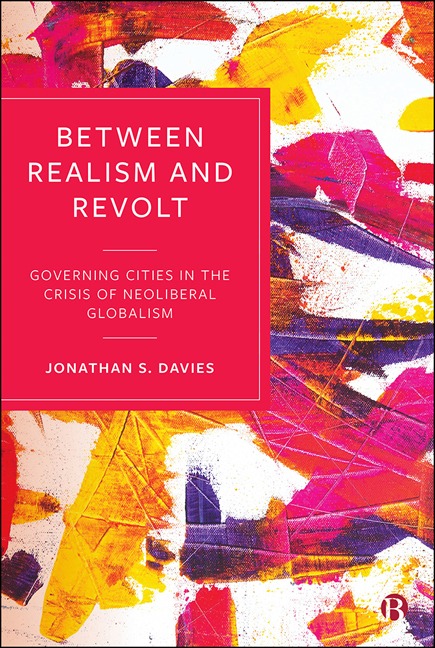Book contents
- Frontmatter
- Dedication
- Contents
- List of Tables
- Contributing Investigators
- Acknowledgements
- Preface
- Introduction
- 1 Studying Urban Political (Dis)Orders
- 2 Dynamics of Crisis, Neoliberalisation and Austerity
- 3 Austerity and State Rescaling
- 4 Consolidating Neoliberal Austerity Regimes
- 5 Regime Divergence and the Limits of Austere Neoliberalism
- 6 Resisting Austerity: Resonant Solidarities and Small Wins
- 7 The ‘Activity of Ruling Groups’: Containment, De-mobilisation and Fragmentation
- 8 Reading the Conjuncture: (Dis)Ordering Dynamics in the Crises of Neoliberal Globalism
- Afterword: Into the Pandemic
- Notes
- References
- Index
Introduction
Published online by Cambridge University Press: 05 January 2022
- Frontmatter
- Dedication
- Contents
- List of Tables
- Contributing Investigators
- Acknowledgements
- Preface
- Introduction
- 1 Studying Urban Political (Dis)Orders
- 2 Dynamics of Crisis, Neoliberalisation and Austerity
- 3 Austerity and State Rescaling
- 4 Consolidating Neoliberal Austerity Regimes
- 5 Regime Divergence and the Limits of Austere Neoliberalism
- 6 Resisting Austerity: Resonant Solidarities and Small Wins
- 7 The ‘Activity of Ruling Groups’: Containment, De-mobilisation and Fragmentation
- 8 Reading the Conjuncture: (Dis)Ordering Dynamics in the Crises of Neoliberal Globalism
- Afterword: Into the Pandemic
- Notes
- References
- Index
Summary
In April 2009 soon-to-be British Prime Minister, David Cameron, announced that ‘the age of irresponsibility’ was ‘giving way to the age of austerity’. In his final budget as UK Labour Chancellor in 2010, Alistair Darling warned that repairing the damage to public finances done by the global economic crisis (GEC) would require ‘deeper and tougher’ cuts than even the Thatcher years (cited in Elliott, 2010). With these soundbites, austerity became the official bipartisan doctrine of the British political establishment, embraced by forces from the centre-left to the Tory right. The national austerity consensus was not seriously challenged in mainstream British politics until the election of democratic socialist, Jeremy Corbyn, to the leadership of the UK Labour Party in 2015. As it was in Britain, so it was across Europe and North America. ‘Age of austerity’ doctrines became ingrained in the politics of conservatives, liberals and social democratic pragmatists alike. More than a decade after the GEC, cities were still plagued with austerity, even as it lost traction in mainstream political discourse (Jordan, 2019). Its continuing legacies included municipal retrenchment, the evisceration of public welfare, coercive state rescaling and restructuring and pervasive neoliberal groupthink with its complement in corporate handouts and competitive urban growth strategies: the latter often from the realms of fantasy (Dean, 2014).
It is well-established that austerity targeted the worst-off (Meegan et al, 2014; Hastings et al, 2017), while elements of the middle class were also sucked into economic precarity (Blanco et al, 2020; Gaynor, 2020). Cucca and Ranci (2017: 267) diagnosed three common characteristics emerging from neoliberalisation, aggravated by austerity: ‘state delegation of further responsibility for local economic development as well as social integration, strong cuts in central funding and tighter constraints on local budgets’. They found that even in cities like Copenhagen and Munich, not commonly associated with austerity urbanism, any balance between social inclusion and competitiveness had tipped so far to the latter that little remained of the so-called ‘European City Model’.
- Type
- Chapter
- Information
- Between Realism and RevoltGoverning Cities in the Crisis of Neoliberal Globalism, pp. 1 - 18Publisher: Bristol University PressPrint publication year: 2021

